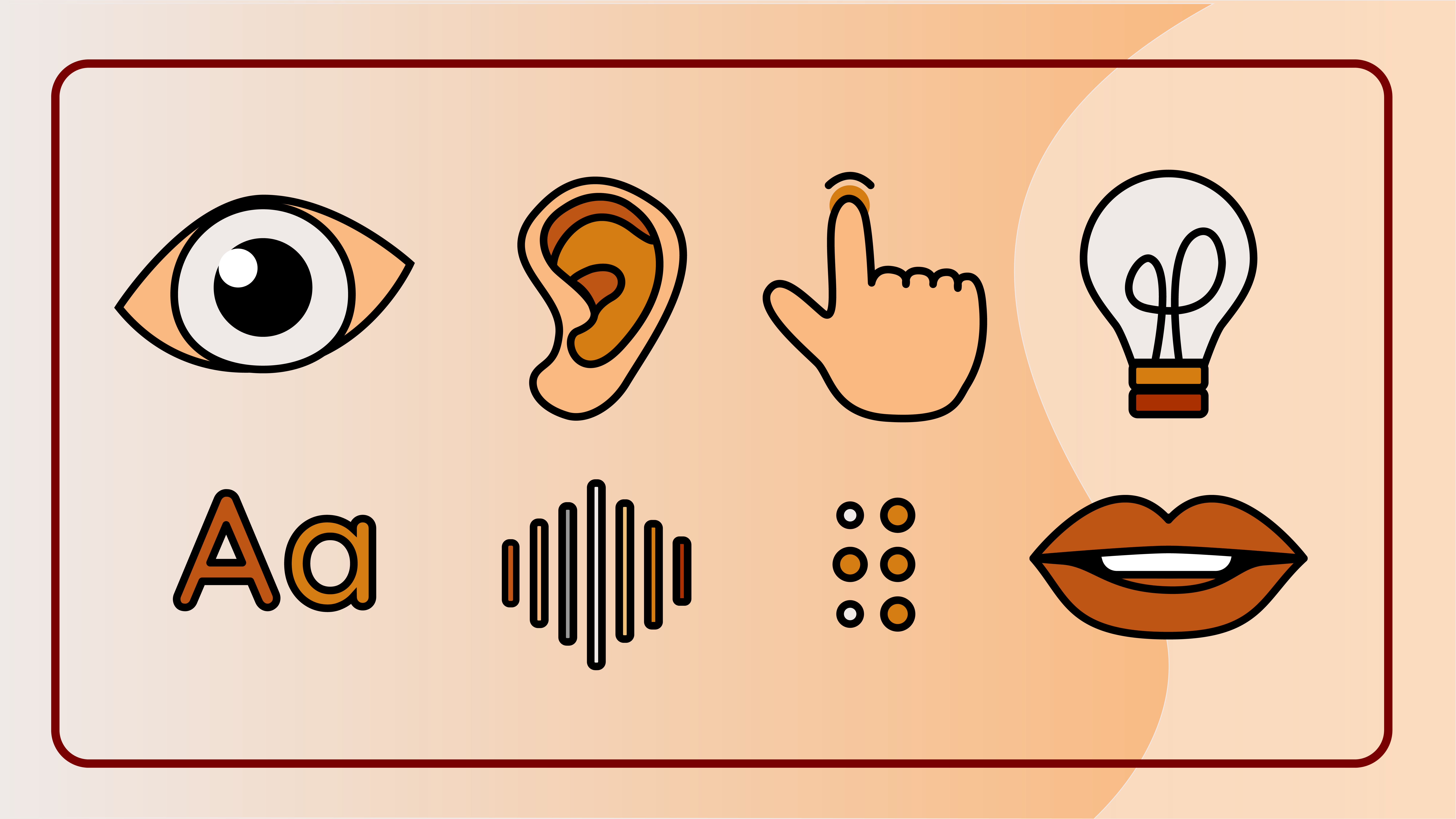General

Inclusive online education goes beyond simply making educational materials accessible to all students. To provide a truly inclusive experience, it is important to understand and address the individual accessibility needs of each student. This includes implementing best practices for teaching and tutoring, as well as providing effective student support. In this page, you will find helpful information to recognise and understand the needs of students with disabilities.
Related topics
Key tips
- Confidentiality and Disclosure
-
- The first and most critical issue is that all students’ personal data and confidentiality must be guaranteed.
- Health and medical related data is classified as high sensitive data, therefore it must be treated accordingly.
- Students may not know they can take online courses, regardless of their disability, because support offices cannot contact and inform them directly due to privacy restrictions between schools and universities.
- Let students know about the supporting services
-
- The starting point for implementing inclusive digital distance education is to ensure that students are aware of the existence of the student support service and the benefits they can get from it. Students and applicants for higher education should be informed about this fact. Because of the importance of the issue, It is advisable to have a communication plan.
- Set a communication plan. The following is a sample:
- Determine the most effective ways to reach the students and their families. Ie. collaborating with pre-university educational organisations, associations of people with disabilities and national/regional umbrella organisations.
- Set a discourse that clearly and concisely communicates the services provided by the support entity and the benefits for the student community.
- Use multiple channels to do the dissemination like your own institutional communications, emails and social networks.
- Regularly evaluate the effectiveness of the communication plan, making adjustments as needed to better reach the students.
- Inclusive educational environment
-
- The whole educational community, not just teachers, should be trained and made aware of inclusion issues.
- Inclusive design should be used for all activities in the organisation. This has a positive impact not only on students with disabilities, who will be able to access the education, but can also lead to more effective and engaging learning experiences, which can result in better learning outcomes for all students.
- Awareness-raising activities like:
- Providing training and professional development for all staff on inclusive practices, universal design for learning, and disability awareness.
- Hosting workshops, seminars, and events that focus on diversity, equity, and inclusion in education.
- Conducting regular accessibility audits of the campus, digital resources, and course materials to identify and address any barriers..
- Empathetic direct communication
-
The best way to understand what a student needs and the issues they might have is to talk directly to them with empathy. Some key points for establishing effective relationships with supported students are the following:
- Respect. Avoid making assumptions about what they need or feel.
- Active listening. Ask questions to better understand their perspective and issues.
- Try to see the world with their eyes.
- Recognise their strengths. Avoid focussing on the perceived negatives like limitations and disability.
- Build trust. Students should feel in every interaction that they may trust the support service and its staff.
- Be flexible and open-minded. Some solutions may appear impossible to implement.
- Collaborate with them to find solutions. Let them play an active role in finding solutions.
- Set clear limits and rules That will help build a healthy support provider - student relationship.
- Common student needs
-
- Access to suitable assistive technology. Eg. screen reader that works with the electronic device the student uses for accessing the distance education.
- Accessible Learning Management System (LMS). The delivery of the distance education has to be done with an accessible software, compatible with the AT that the students may use.
- Accessible digital communication. There must always be more than 1 means of communication with students. Additionally, the channels used should be accessible.
- Accessible educational materials. Ie. accessible documents, multimedia and activities.
- Flexible course design. The learning activities should be designed according to the principles of Universal Design for Learning (UDL). Eg. Students should be able to complete tasks by writing text, but also by means of a recording, unless their writing is the subject of assessment.
- Individual support plan. A plan of activities to support the student should be established. This plan may include, among others, specifying the tests to be taken by the student and how they have to be adapted to the student's specific needs.